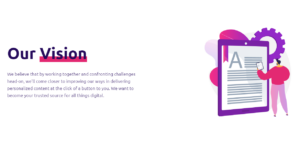The 844 area code scam is a growing concern, targeting unsuspecting individuals with fraudulent technical support calls. In this article, I will shed light on the inner workings of this scam, provide tips on how to protect yourself, and share my personal experience with these deceptive calls.
Understanding the 844 Toll-Free Area Code
The 844 area code is part of the North American Numbering Plan, which encompasses various toll-free numbers that are free for the caller to dial. These numbers, including 800, 833, 855, 866, 877, and 888, are commonly used by businesses to provide customer support or sales services.
While the 844 area code itself is legitimate, scammers have exploited it to deceive unsuspecting individuals. By using these toll-free numbers, they aim to gain trust and create a false sense of credibility.
How Scammers Exploit the 844 Area Code
Scammers employing the 844 area code often engage in technical support scams. They may call you claiming to be from a well-known tech company, informing you of a supposed issue with your computer or device. Their goal is to trick you into granting them remote access or providing sensitive personal information.
These fraudulent calls are often generated using spoofed phone numbers, making it difficult to trace the origin of the call. Scammers may also use high-pressure tactics, creating a sense of urgency to manipulate you into complying with their demands.
As someone who has received multiple 844 area code scam calls, I can attest to the convincing nature of these scams. The callers often sound professional and knowledgeable, making it easy to fall for their deception. It’s crucial to remain vigilant and question the legitimacy of unsolicited calls, no matter how convincing they may seem.
Identifying and Reporting 844 Area Code Scams
To protect yourself from falling victim to 844 area code scams, it’s essential to be proactive. If you receive a suspicious call from an 844 number, avoid engaging with the caller. Instead, hang up and perform a reverse phone lookup to verify the caller’s identity.
If you suspect that you’ve been targeted by a scam, report the incident to the proper authorities. Contact your local law enforcement agency and file a complaint with the Federal Trade Commission. By reporting suspicious activity, you can help prevent others from falling victim to these scams.
Protecting Yourself from 844 Area Code Fraud
To safeguard yourself against 844 area code fraud, stay vigilant and take preventive measures. Be cautious of unsolicited calls, especially those claiming to be from technical support. Avoid providing personal information or granting remote access to your devices unless you have initiated the contact.
Educate yourself about common scam tactics and red flags. If a caller creates a sense of urgency or pressures you to make immediate decisions, it’s likely a scam. Trust your instincts and err on the side of caution to avoid potential financial losses.
“Always verify the identity of the caller before engaging in any conversation or providing sensitive information. Legitimate companies will never pressure you or resort to scare tactics. If something feels off, trust your gut and end the call.” – Dr. Eliza Kaczmarek, Cybersecurity Expert
Legitimate Uses of the 844 Toll-Free Area Code
It’s important to note that not all calls from the 844 area code are scams. Many reputable businesses and organizations use toll-free numbers, including the 844 prefix, for legitimate purposes. These may include customer support, sales inquiries, or appointment scheduling.
To differentiate between legitimate and fraudulent calls, pay attention to the context and content of the conversation. Legitimate businesses will typically provide clear identification and won’t resort to high-pressure tactics or unsolicited technical support claims.
Blocking Unwanted Calls from the 844 Area Code
If you find yourself frequently targeted by unwanted calls from the 844 area code, consider blocking these numbers. Most modern smartphones and landlines offer call blocking features, allowing you to screen and reject calls from specific numbers.
Some commonly reported 844 spam numbers include:
| 844-217-7835 | 844-228-3340 |
| 844-232-3957 | 844-265-1384 |
| 844-292-8615 |
By blocking these and other suspicious numbers, you can reduce the chances of falling victim to 844 area code scams and protect your peace of mind.
From my experience, regularly updating my phone’s block list has significantly reduced the number of unwanted calls I receive. It’s a simple yet effective way to protect yourself from potential scams and maintain a sense of control over your phone communications.
In conclusion, the 844 area code scam is a serious issue that requires awareness and proactive measures. By understanding how these scams operate, identifying red flags, and taking steps to protect your personal information, you can safeguard yourself from falling victim to technical support fraud. Remember, vigilance is key in the fight against phone scams.
See also:
- How to Block “Scam Likely” Calls and Stop Phone Scams
- Protecting Yourself from “Scam Likely” Calls: A Comprehensive Guide
- Beware, Hmmm: Fake UPS Package Text Scams Steal Your Money, They Do!
- Beware of Norton Email Scams: Protect Your Money and Personal Information
- Beware of the Facebook Marketplace Code Scam: Protect Yourself from Fraudsters






